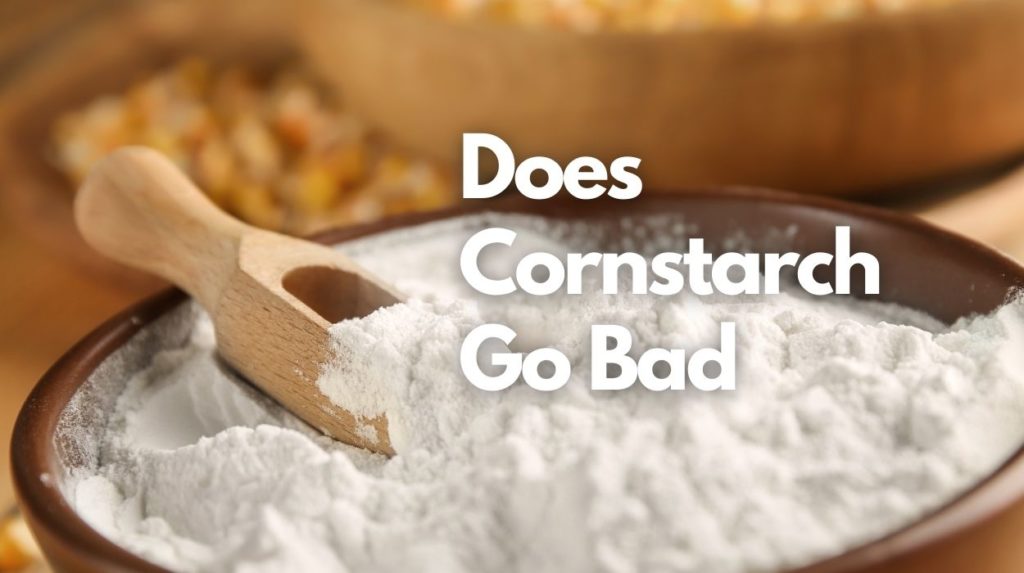
You might not use cornstarch every day, but whenever you use it to prepare dishes, you know it will taste amazing! Cornstarch will certainly come to your rescue, whether fluffy omelets or thick sauces!
But will it stand against the test of time, given the fact that it is not something that is used daily? Will it lose its potency to thicken liquids over time? What about its taste?
While cornstarch does go bad with time, it can be preserved with the correct storage techniques. If that sounds like something you are interested in, you’ve landed on the right article, as we shall explain the best methods to store and preserve cornstarch.
How Long Does Cornstarch Last?
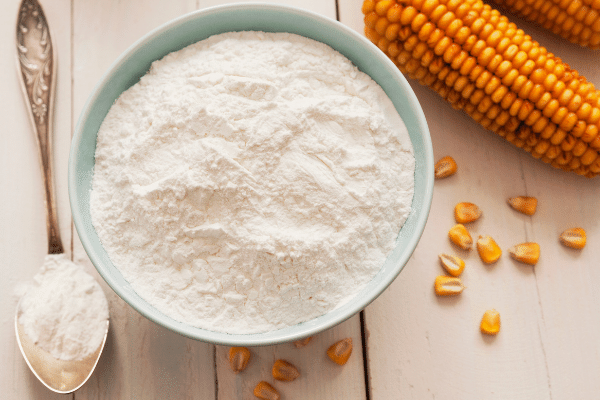
Like other products made from corn, Cornstarch has an indefinite shelf-life. It means Cornstarch never goes bad, provided that it is stored properly and no moisture or bugs make their way into the container.
Cornstarch is mainly used for thickening soups and liquids, and hence people want to know if Cornstarch loses its potency to thicken liquids over time. Fortunately, Cornstarch has an indefinite shelf-life, and it won’t go bad over time, provided that it is stored properly.
Cornstarch comes with a use-by date mentioned on its label. But you don’t need to worry about the use-by date, especially if you have stored it in an air-tight container. Cornstarch is a shelf-stable item that stays fine and of good quality, even in your pantry or kitchen cabinet.
Do cornstarch and water go bad?
If you have prepared a mixture of cornstarch and water, it must be used within 24 hours. Anything more than that, and you might start experiencing the presence of mold.
How To Tell If Cornstarch Has Gone Bad?
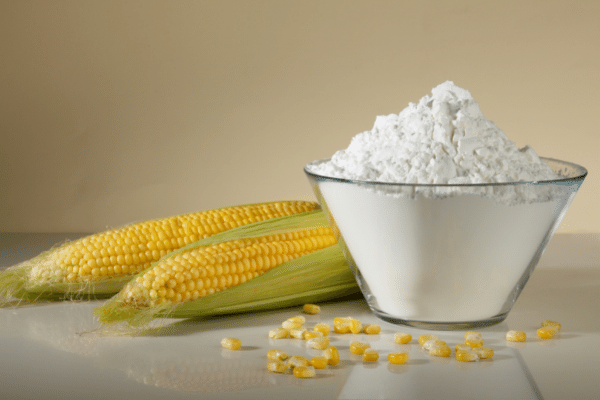
As mentioned, Cornstarch has an indefinite shelf-life, and it never loses efficiency and potency to thicken liquids even after its use-by date. Some people avoid using Cornstarch after the best-by date mentioned on the label. But, after mixing it with hot water, the potency of the Cornstarch is restored, making it usable again.
However, here are a couple of spoilage signs to look for before using Cornstarch for thickening your soups and liquids.
Mold Growth
If the container or package of Cornstarch is stored inappropriately, it will be exposed to moisture and air, and over time you may see signs of mold and bacterial growth on the surface of the Cornstarch.
Cornstarch exposed to moisture can get moldy in a couple of days and if you see any mold growth on the surface of Cornstarch, discard it as it is no longer edible.
Clumping
When the Cornstarch is exposed to moisture, you will see mold growth with small clumps. Although the powder seems fine, there will be small clumps in between.
If you see such clumps in your Cornstarch, transfer it into an airtight container before it starts getting moldy. Ensure that it is not exposed to air or moisture ever again.
Bugs inside Cornstarch
Cornstarch may get pantry bugs inside it when stored for a long time in your kitchen cabinet or pantry. If you see bugs on the surface of Cornstarch, immediately change the container and use an airtight container for storage.
Pro Tips!
The best way to store your Cornstarch and prevent it from going bad is by using a quality airtight container. Never store it in the original packaging; instead, transfer it to an airtight container for proper storage, and it will help extend the shelf-life of the Cornstarch.
What Happens If You Use Expired Cornstarch?
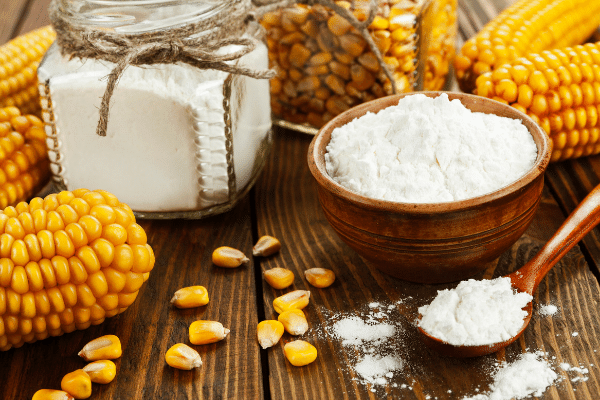
First, you have to understand that the use-by date mentioned on the package label is not the expiry date of the Cornstarch. So, you must not consider the cornstarch inedible after it passes the use-by date. The use-by date only tells you that the flavor and quality of Cornstarch might have been tainted after that period.
Can expired cornstarch make you sick?
Cornstarch never loses its quality and performs at its best even after the use-by date. People can use Cornstarch even after expiry, and there is no risk of consuming it after the use-by date. You will experience no health issues after consuming Cornstarch that has passed the use-by date.
But, you have to ensure that there is no moldy growth on the surface of Cornstarch as it may cause allergic reactions and lead to respiratory issues.
Can You Freeze Cornstarch? Refrigerated Vs. Shelf-Stable
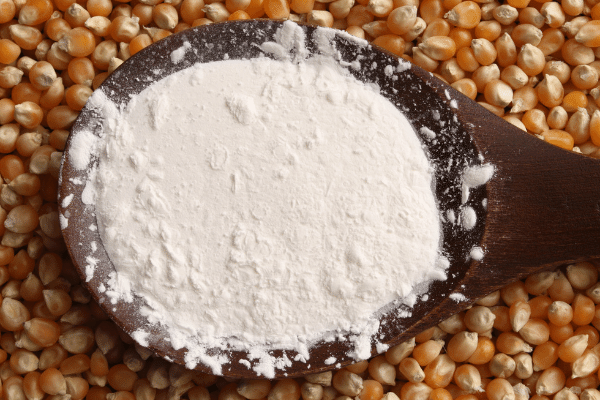
Freezing is not recommended for Cornstarch as it does nothing to extend the shelf-life of the food item. Since it is a shelf-stable item, it sits well in your pantry at room temperature. It won’t go bad for years, provided that it is stored properly in an airtight container at any cool, dry and dark spots.
Freezing your Cornstarch may impose a risk of moisture exposure, and it may lead to mold and bacterial growth on the Cornstarch, therefore increasing the chance of going bad quickly. If freezing is the only choice you have, ensure to follow the below tips to store Cornstarch in a freezer.
- Use a freezer bag or air-sealed container to store the Cornstarch. It helps keep the moisture away from the Cornstarch and prevents air leakage.
- Since Cornstarch doesn’t need any specific temperature for freezing, you can store it in a normal freezer. But, you have to ensure that moisture and air never leak inside the container, or it may spoil quickly.
Refrigerated
Refrigeration is not necessary for Cornstarch as it will not help increase the shelf-life of the item. But if you store it in your fridge, ensure that it is stored in an air-sealed container.
The temperature of your fridge will keep Cornstarch usable and cold. But the only drawback is that there is a higher chance of moisture leakage in a refrigerator. Due to the temperature forming moisture, the Cornstarch may go bad quickly in a fridge.
So, when you plan to store it in your fridge, you must pay attention to the moisture leakage and use freezer bags or airtight containers to keep it safe from spoiling.
Shelf-Stable
As mentioned, Cornstarch is a shelf-stable food item, and it stays fresh and flavorsome when stored in the pantry or kitchen cabinet. The room temperature is enough for the Cornstarch to last and keep its freshness.
The temperature of a pantry or kitchen cabinet doesn’t allow moisture to seep in, and hence there is less chance of bacterial growth. But, you must ensure to store the Cornstarch in an airtight container so that moisture and air won’t get in to spoil the Cornstarch. Therefore, your Cornstarch will keep its freshness indefinitely.
If the container is exposed to heat or you see moisture on the container, discard the Cornstarch. Cornstarch that comes in contact with heat sources or moisture won’t last long, and it may have mold growth which can cause allergic reactions. So, it is best to discard the Cornstarch when you notice moisture in the container.
How to Store Cornstarch?
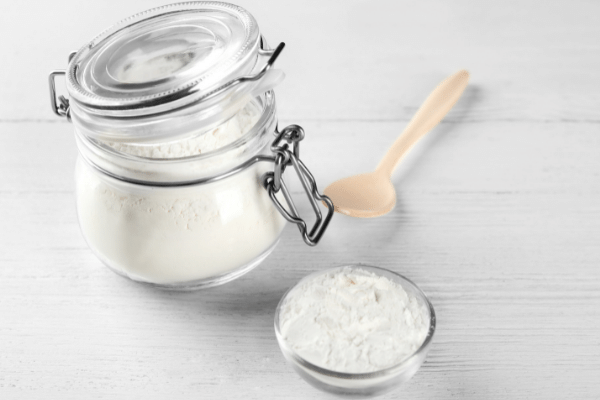
Since you are aware now, Cornstarch has an indefinite shelf-life only when you store them appropriately. But, like other powdered food items, Cornstarch is a low-maintenance item with minimal storage requirements.
Below are a couple of storage tips that can help you keep your Cornstarch safe and edible for an indefinite time.
Use Airtight Container for Storage
After opening the package of Cornstarch, you must reseal it carefully. Cornstarch usually comes in a plastic container, and they are airtight or leak-proof. So, it is best to transfer the leftover Cornstarch into an airtight container or re-sealable bag.
The airtight container keeps the Cornstarch safe and protected from moisture exposure, which negatively impacts the powder’s potency. Cornstarch powder attracts pantry bugs and insects, and when you store it in re-sealable bags, it prevents the tiny villains from entering and spoiling the Cornstarch.
Store Cornstarch in Cool and Dark Places
Cornstarch powder must be stored the same way you store other powdered food items. It means you have to store the leftover Cornstarch in cool and dry places. Ensure that it is sealed tightly when not in use, as per Argo and Kingsford Cornstarch.
The pantry offers the best environment for the storage of Cornstarch. A kitchen cabinet is also a good option for storing the Cornstarch.
Ensure to Prevent Moisture Exposure
Cornstarch and moisture have interesting relations. They shouldn’t come together unless you are making a recipe or cooking.
When Cornstarch is exposed to moisture, clumping starts, and damp Cornstarch is likely to attract bugs and promote mold and bacterial growth.
Does Cornstarch Lose Its Thickening Property Over Time?
Unless you notice bugs in your cornstarch, your cornstarch will not lose its thickening property. However, the process of thickening might elongate if you have heated the cornstarch.
But apart from that, your cornstarch will not lose its thickening property over time.
What can you do with old cornstarch? (Uses for Expired Cornstarch)
Even though cornstarch does not expire, you can use old packets of it in the following manner:
- For skincare
- For removing oil stains
- As a dry shampoo
- For starching your clothes
- DIY makeup powder
- As a deodorant
What are the Alternatives to Cornstarch if it has gone bad?
In case you want to thicken your sauces but you’ve run out of cornstarch or the one in your kitchen has gone bad, you can resort to the following alternatives:
- Potato starch
- Wheat flour
- Rice flour
- Xanthan gum
- Ground flaxseeds
Frequently Asked Questions
How Long Does Cornstarch Last Once Open?
If you have purchased commercial Cornstarch, it can last indefinitely. If proper storage protocols are followed, whether it is unopened or opened, it will last for a long time. You can use it for recipes and cooking even after the use-by date mentioned on its label. It will keep its potency to thicken liquids even after the best-by date.
How long can you use cornstarch after the expiration date?
As mentioned, there is no health risk in using Cornstarch even after the expiry or use-by date mentioned on the label. If you have stored Cornstarch properly as recommended, you can feel free to use it for thickening any liquids. But, ensure to check out spoilage signs, especially mold growth, before using the Cornstarch after the use-by date.
Can I Store My Cornstarch In The Fridge?
The pantry shelves or kitchen cabinet is the best place for storing the leftover Cornstarch. You are not required to refrigerate or freeze the Cornstarch. It will not help extend the shelf life of the Cornstarch; instead, it increases the risk of moisture exposure which will accelerate the spoilage process of the Cornstarch.
Can Bacteria Grow In Cornstarch?
Since cornstarch is devoid of any preservatives, it will most likely grow bacteria or fungus when exposed to moisture. This makes it even more necessary to store cornstarch correctly.
Does cornstarch get bugs?
Bugs are one of the first spoilage signs of cornstarch. While they might be small, their dark brown and black color will make them noticeable.
The Bottom Line
Now that you are already aware of how to store your Cornstarch, you can use it indefinitely. Hopefully, everything has been discussed that you need to know about Cornstarch. Does Cornstarch go bad? What are the storage requirements? How to tell if Cornstarch has gone bad? By now, you know it all!
The fresher the food, the better! But, with Cornstarch, you may feel free to stock them as much as you want and use it to thicken liquids and soups without worrying about the expiry date.



